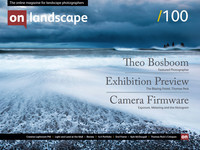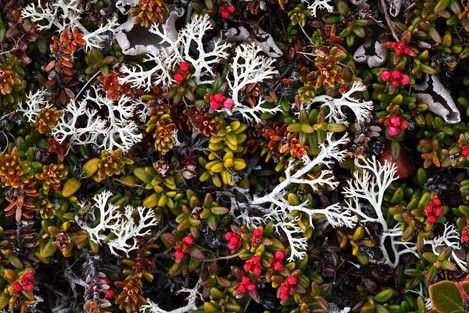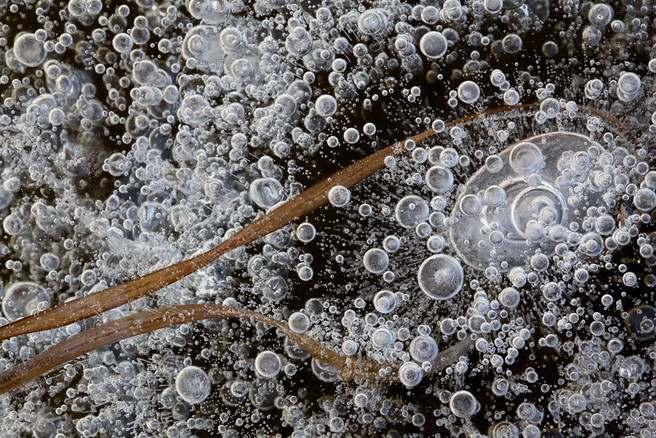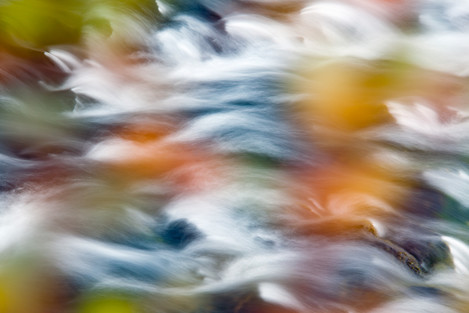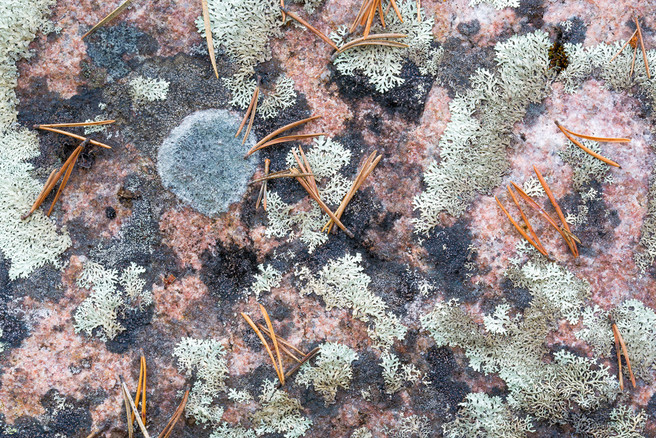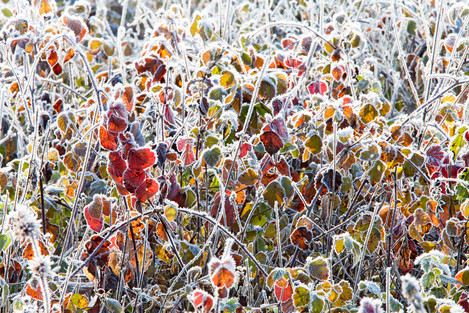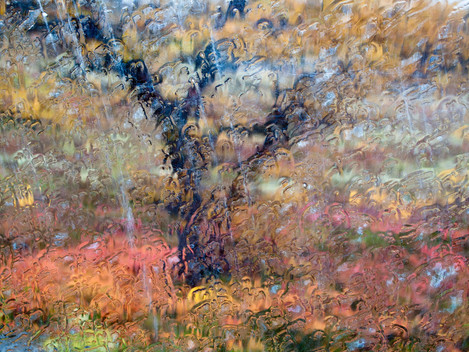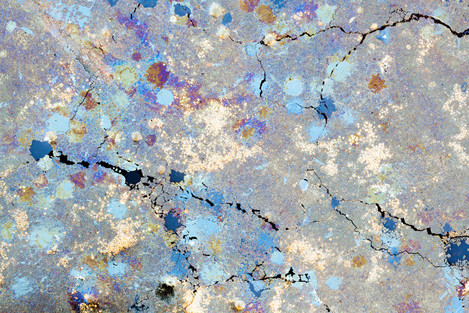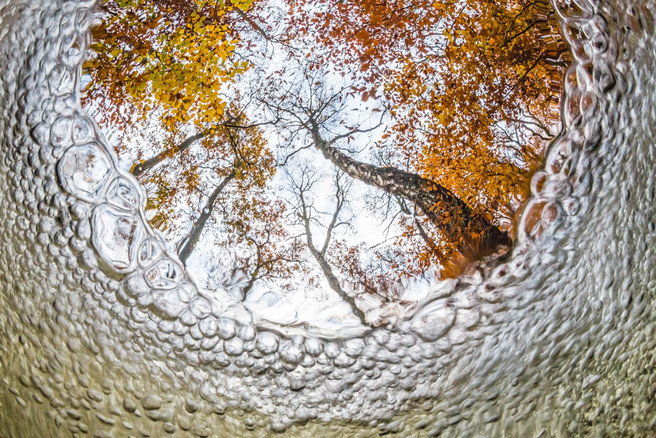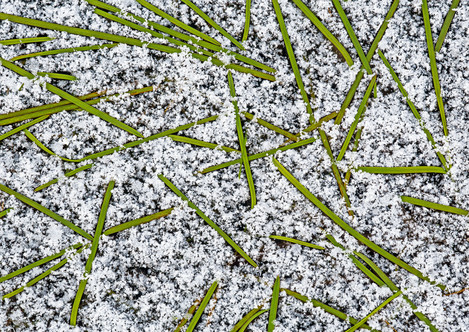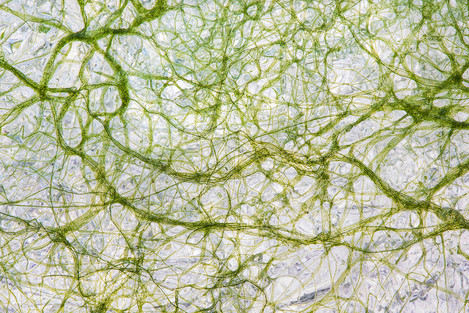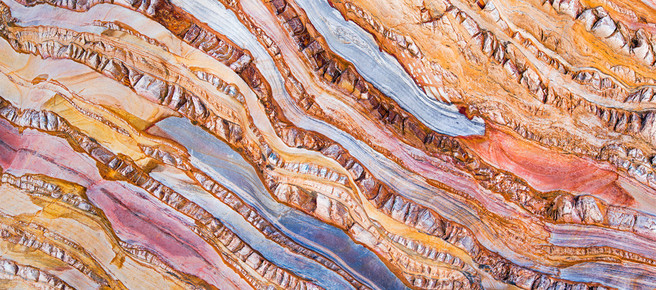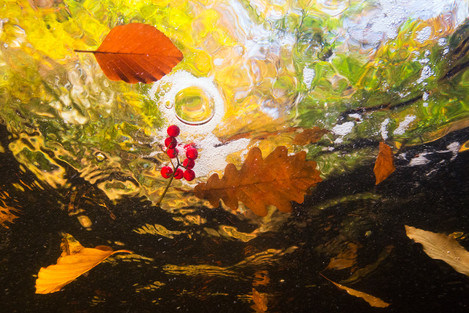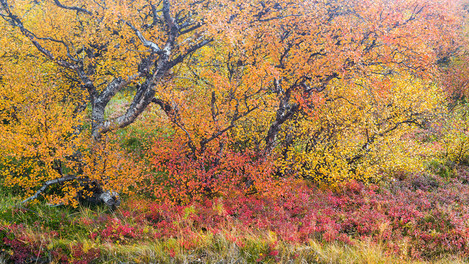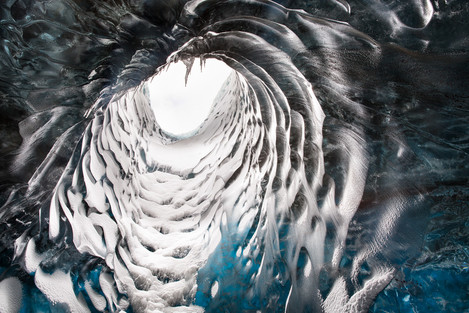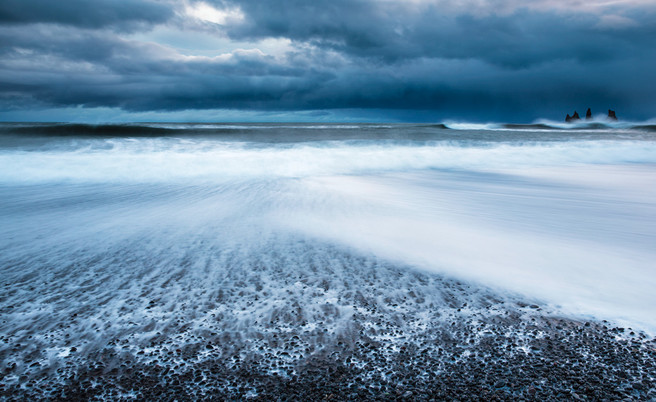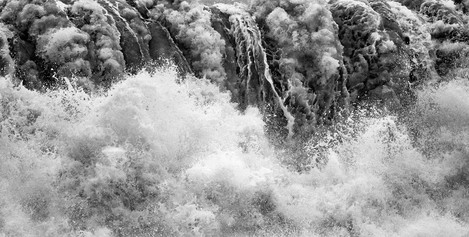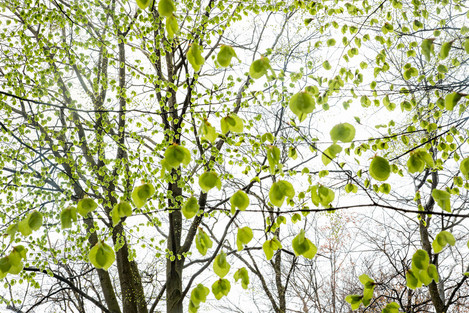Featured Photographer

Theo Bosboom
Theo Bosboom is a passionate photographer from the Netherlands, specialising in nature and landscapes. In 2013, he turned his back on a successful legal career to pursue his dream of being a fulltime professional photographer. He is regarded as a creative photographer with a strong eye for detail and composition and always trying to find fresh perspectives.

Michéla Griffith
In 2012 I paused by my local river and everything changed. I’ve moved away from what many expect photographs to be: my images deconstruct the literal and reimagine the subjective, reflecting the curiosity that water has inspired in my practice. Water has been my conduit: it has sharpened my vision, given me permission to experiment and continues to introduce me to new ways of seeing.
Theo Bosboom is a Dutch nature photographer who has turned his passion for creative photography into a new career. His images have been recognised in competitions such as Wildlife Photographer of the Year and the International Photography Awards. He has a deeply personal approach to his photography, largely shooting the ‘intimate’ nature that he loves and always looking for new interpretations.
From Africa to Iceland, and from IT lawyer to pro photographer. It’s been quite a journey for you, hasn’t it? Tell me a little about your background – your childhood passions, education and vocation – and how you first got into photography?
Yes it’s been quite a journey, but I also hope there still lies a long journey ahead as well!
After secondary school I studied international and civil law and after some years of temporary jobs and a lot of travelling I started as a lawyer at a big law firm in Arnhem, the Netherlands. I did IT-law and internet law and also a bit of copyright law. All very interesting specialisations and I really enjoyed my work. In 2003 I took a two months break from work to visit Namibia and Tanzania. It was my first trip with a ‘real’ camera (a simple analogue SLR from Canon) and I spent a lot of time taking pictures. I discovered that – contrary to the popular belief that you don’t really see anything when you look through your viewfinder the whole trip – I discovered all kind of things that I had never noticed before. Like the direction of the light and all kind of details in the landscape. It opened my eyes and from that moment I was hooked for photography.
In the years that followed, photography became more and more important to me and I spent more and more time on it. My pictures started to get noticed, I started to win awards at international competitions and got nice publications and presentations. At one stage, I found out I was getting stuck. My career as a lawyer had also developed, so I became a partner and got more responsibilities. This also meant of course less time for photography. When I also became a father in 2010 I got the feeling that I didn’t have time for anything anymore.
My frustration as a photographer grew steadily, because I had so many plans for pictures and projects and I simply didn’t have the time to go out and execute them. So I knew the point had come to take a decision: I had to bury my ambitions as a photographer and make it just a hobby again or I had to jump into the deep and go for it. After a couple of restless weeks with a lot of thinking, calculating and talking, I decided to follow my heart and jump into the deep. Since January 1st, 2013, I am a fulltime professional photographer and I am still very happy I took the plunge.
After Africa you joined a local camera club. How did this shape your photography and help it to evolve?
This was an important step in my development, especially during the first two years. First of all it learned me that it is possible to take exciting photographs of the – at first glance - pretty unexciting nature in my own country. This motivated me to go out much more often and not only during the holidays at foreign locations. Furthermore I learned a lot about composition and technique from the more experienced members. And last but not least, I made some friends there that I still see on a regular basis. The last years I hardly visit the club meetings anymore, because of a lack of time and also because they are not so inspiring for the more advanced photographers.
What subjects and styles of (landscape or nature) photography are popular in the Netherlands?
Bird photography is very popular in the Netherlands. And macro photography. Because we don’t have iconic, spectacular landscapes, the amount of specialised landscape photographers is probably lower than in other countries. Interestingly, a large majority of the Dutch nature photographers is aiming for the same subjects. During the rutting season for example, you can see hundreds of people waiting in line for the deer in one of our national parks. It is not for me, I don’t want to take the same pictures as other photographers and I prefer to enjoy nature in silence and on my own or just in a small group of people.
With respect to style I think there are two main streams: the photographers that see and photograph nature with a biological view and are often more focussed on (rare) species than on aesthetics. And the photographers that focus more on the creative part of photography and care much less about the species that are on the picture. Of course this is a huge generalisation, but the distinction is still there. The last years more and more photographers are willing to experiment and I see a lot more creative work, which is a good development I think.
Which photographers, artists or individuals have most inspired you - now or in the past?
Nowadays I am inspired by a lot of different photographers. There are so many talented people out there and I see many inspiring pictures every day on the internet and in magazines. If you look for photographers that have really changed my way of seeing and have inspired me for a longer period, I would like to mention Hans Strand, Vincent Munier and Frans Lanting. Moreover I am inspired by the work of painters as well, like Rothko, Pollock and Monet.
And I like looking at photographs from other disciplines like sports or architecture, because they can inspire me as well and sometimes give me new ideas that I can apply in my landscape and nature photography.
You turned ‘pro’ not long after becoming a father and now have two girls aged 3 and 5. How easy – or difficult – has it been to balance the demands – and uncertainty – of your new career as a professional photographer with family life?
So far I think I am doing ok. But there is always a tension between everything I would like to do for my photo career on the one hand and the needs of my daughters and my family on the other hand. I would love to do projects in Patagonia or Greenland for example, but at the moment I don’t do it because I would have to be away from home much longer than I consider acceptable. Photography is very important in my life, but my family is even more important, it is as simple as that.
From a financial point of view I made an agreement with my girlfriend that I could try to make a living as a professional photographer for a couple of years. After that, we will make up the balance and see if it works good enough to pay our mortgage and the bills. If not, I will have to figure out a plan B. Luckily things go well so far and I am optimistic about the future.
Has your track record in competitions helped you to establish yourself?
Yes absolutely. I think it is a good way to get attention for your pictures, especially if you win something at the bigger competitions like Wildlife Photographer of the Year or European Wildlife Photographer of the Year. It has certainly opened some doors for me. On the other hand I think the value of success at competitions is declining a bit the last years, because there are so many competitions and almost every serious photographer is ‘award winning’ nowadays. Still I like to participate in a couple of competitions each year. It makes me look very critically to my own work and it is just fun to see if anything comes out. Just don’t take it too seriously and everything is fine.
Are you able to continue to make the kind of images that you love and find fulfilling, or are some compromises a commercial necessity?
My mission when I started was to make a living out of the pictures I love myself and doing projects that I like. I also want to limit the amount of local workshops and foreign photo tours I am leading, because I want to have enough time for my own photography. For the same reasons I don’t do weddings, portraits and other stuff that could bring in money a bit easier. I want to do it my way, otherwise photography might start looking at a real job instead of a passion very soon. Of course I also have to compromise a little bit every now and then, but that is no problem for me.
So far it is going really well and the approach seems to work. I was able to publish two stories in the Dutch edition of National Geographic last year, which helped me to establish my name further in the Netherlands and opened up new doors for me.
Can you choose 2 or 3 of your own images that have particular resonance for you and tell us a little about them?
Yes of course
Fish-eye view
For some time I have been fascinated by the dynamics of underwater landscapes in small mountain streams and brooks. In a small brook in the Netherlands (Leuvenumse beek) I found a small waterfall, just under a couple of beautiful autumn trees.
I got into the water with my underwater housing and experimented with half over half under images, with the bubbles of the waterfall combined with the autumn landscape above the surface. I consider this as one of the best pictures from my project ‘the journey of the autumn leaves’ and it is an example of the type of pictures that I try to take, giving a new and surprising view of nature. It is also special to me because it was the runner up in the creative visions category of Wildlife Photographer of the Year in 2013, so it has been seen by millions of people all over the world. That is a much broader audience than I am used too ;-)
Fulmar on lava beach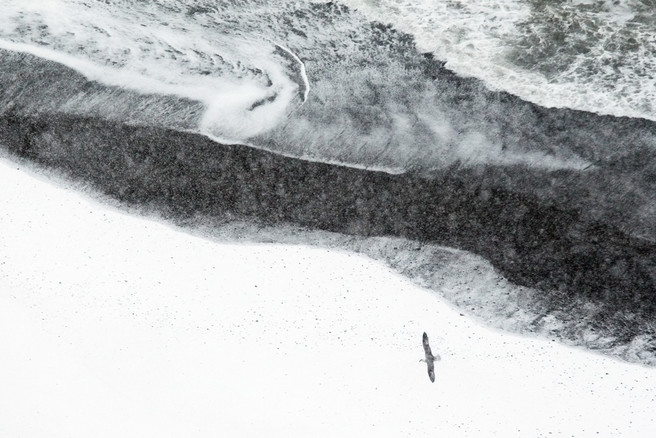
This picture is also typical for my work I think, because it was taken on Iceland in winter and it is very graphical and reduced. It was taken from a high cliff above a black lava beach between Höfn and Djupivogur in the East of Iceland, in winter 2011. Some fulmars (Fulmarus glacialis) were flying circles above the beach and the sea, probably in search of food. I was very much attracted by the graphic lines of the snow, the black sand and the water and the fulmar seemed to fit in very well. It was very cold, very windy and it snowed heavily, but the fulmar didn't seem to care, used as it is to these conditions.
Which cameras and lenses do you typically take on a trip and how do they affect your photography? Do you have a favourite lens?
Normally I would take two bodies, for me currently the Canon 5d iii and the 1DX. The lenses depend on the goal of the trip, but I always take my 24-70, 70-200 and my 300/2.8 telelens. Usually I take a macro lens and a real wide angle lens too. I just bought the 11-24 lens from Canon, an interesting lens that can provide exciting perspectives. My favourite lens is the 70-200 2.8 L IS II lens from Canon. This lens enables me to isolate parts of the landscape and to focus on details that stand out for me. Although I have my ‘wide angle moments’ as well, I always end up using this lens.
Of course I feel blessed to have such high quality gear and it surely helps me to realize my vision. But on the other hand you shouldn’t overestimate the value of photo gear. On my Iceland trips I see customers with brand new expensive professional gear that don’t take a single interesting picture, just because they don’t have the eye for it. And the other way around: customers producing breathtaking pictures with outdated cheap cameras.
How do you prefer to process and print your images?
I always start processing in Lightroom. I do 90% of my processing here and the last 10% fine tuning in Photoshop. This used to be 80-20, but since Lightroom is improving and expanding continuously Photoshop is less needed. Still I think the accuracy and the amount control that can be achieved with selections and layers in Photoshop is unbeatable.
Until now, I haven’t printed my own work yet. I have some good addresses that usually deliver very good quality. I would like to learn it though one day, as I believe you can give an extra personal touch to a picture if you print it yourself.
How important is individual creativity? What advice would you give to others who want to develop their photography beyond the commonplace?
For me the joy of photography can to a large extent be found in creating new things, pictures that have not been made before, or at least not so often. And pictures that show nature from a surprising side. Besides the fact that it gives me much more satisfaction than taking pictures that everybody takes, it also helps me to get attention for my subjects and for my work in this highly competitive market. Of course it is not always possible to be new and creative and I do take classic shots as well regularly, but still it is very important for me to at least try to find fresh perspectives on a regular basis.
The problem with creativity is that it is much more difficult to train and to develop it than for example camera technique. Still I believe it is not only a matter of talent; it can be developed by anyone who is open for it. I think it helps to analyse the pictures that inspire you. Not to see whether the photographer used f 8 or f 16, but to find out why exactly the picture moves you and what it is that invokes emotions. I recommend to look at paintings and other forms of art too, because it can also give you good ideas for your own photography.
Furthermore I believe it is good to work on long term projects, because you will learn a lot about your subject and this knowledge will help you to go beyond the commonplace. A suitable project can be a country or area as well. Many landscape photographers travel to new destinations every time. Of course you see a lot of the world this way and new places are always inspiring, but on a single trip it is hard to go beyond the classic pictures of the iconic places that have been taken many times before. My best pictures from Iceland were definitely not taken on my first trip. I was so blown away by the magnificent landscapes that I was perfectly happy just to register what I saw and I forgot to take real photographs. On later trips this all came back and I was able to photograph with my own vision and style again.
We share a love of water - it appeals on so many levels doesn’t it? For ‘Journey of the Autumn Leaves’ you put your camera in a waterproof housing and started making images from below the water’s surface? What first prompted you to try this and what challenges did it present you with?
Water is great! It will probably play an important role in the new book project I will start this autumn. More about that later, it will be one of those long term projects …
The project ‘Journey of the Autumn Leaves’ is the result of a couple of years' trial and error. I had been visiting La Hoegne, a beautiful mountain stream in the Belgian Hautes Fagnes, for many years in autumn and at a certain stage I had the feeling I had photographed it from every angle. Then I started to wonder what happens to all those autumn leaves that fall into the river. And what the autumn looks like from under the water, seen through the eyes of a fish.
Standing in the river with my camera in an underwater housing, I began photographing the autumn from below the surface. First in the Hoegne and later in the stream that runs through the Leuvenum forest, in the Veluwe. I started with a compact camera, but because the first results were promising I decided to buy a ‘real’ underwater housing for my Canon 5Diii.
It was the beginning of an exciting photographic journey of discovery. I noticed that the autumn has its own dynamics under water. The leaves are dragged along by the current. They get caught in eddies between foam and bubbles trapped behind branches and rocks. This sometimes results in major congestion, a traffic jam of autumn leaves.
From a technical point of view, the project was quite a struggle every now and then. I didn’t get my head under water, so I never knew exactly what I was doing. I tried to do it a couple of times, but it didn’t work that well, because the water was not deep enough or the current was too strong to lay still. It resulted also in a lot of unintended selfies, because I often pointed the camera towards the sky and with a fish eye or wide angle lens it is then hard to get your own head out of the frame. I also have been fighting with the flashguns I had bought. It turned out that I knew very little about using flash in my photography, because I had never really done it before. But in the end I was able to photograph a nice portfolio and the pictures were well received. The best ones are included in my new photobook Dreams of Wilderness (see hereunder).
I don’t think we can interview you without talking about Iceland, which I know is special to you. I read that you used to prefer to visit in winter and find solitude without the tourists – but now the tourists are increasingly photographers. How have your experiences of the island changed over time?
It has changed a lot, especially in the last two to three years. In 2007, when I made my first winter trip with my girlfriend, we were the only guests in guesthouse Hali near the glacier lagoon and often we had the lagoon and the black lava beach with the ice blocks just for ourselves. Now you have to book a year in advance for February and last winter trip I sometimes counted 40 to 50 photographers on the beach. It is still a magical place and the numbers are still low compared to for example some of the hot spots in the Alps or the USA, but of course it’s a pity that you can’t have the place for your own anymore.
I know I am partly responsible for it, because of my book Iceland Pure (which contains a lot of winter pictures) and because I lead photo trips to Iceland too in all seasons. I know Iceland would have become very popular without my contribution too, there are many Iceland ambassadors among landscape photographers, but still it makes me wonder sometimes if I should act differently next time.
Do you think that your deep love for what you call Iceland’s ‘rough nature’ stems from growing up and living in a land that is very much regulated by man?
I am sure this plays a role. I have always been attracted to mountains, deserts and other areas of wild nature, things we don’t have in the Netherlands. When I am stuck in a traffic jam again at home, I can feel a deep desire to be in Iceland all of a sudden.
Your new book – Dreams of Wilderness – comes out in September 2015 and shows your quest for raw nature at home. Can you tell us about it?
After the Iceland book it seemed logical to choose a new destination that was even more spectacular, wilder and further away, like Greenland, Svalbard or even Patagonia. On the other hand, this seemed also a bit easy and I was kind of afraid that I would end up with a very similar book. Than it occurred to me that it might be much more challenging to make a book about my own country the Netherlands, and Belgium which is very similar in many respects and also at a pretty close distance from my home. These are two of the most densely populated countries in the world, and almost every square kilometre of land and water is used by someone. Nature has been largely created and regulated by people here. Would it still be possible to experience raw, unspoiled nature here and to create exciting photographs? Well the book is finished now, so the answer is yes!
I was able to experience the feeling of real wilderness in a couple of ways. First of all I went out photographing in extreme weather. I photographed on the Veluwe close to Arnhem and the Belgian Hautes Fagnes when winter was at its harshest. And I went to Schiermonnikoog, a small island in the Waddensea, every time a storm was announced. At these moments, in a way nature takes over control again and you are able to take very different photographs than you could normally do. Furthermore, I was able to photograph the consequences of a destructive fire on the Veluwe last year and nature’s subsequent recovery and I dived into the world of damselflies, which is wilderness at a small scale. The last chapter is the journey of the autumn leaves, which we discussed before.
This all means that the book is far from an overview of the interesting nature areas that are left in the Netherlands and Belgium. It is much more a very personal view on nature close to my home, with a focus on intimate nature and an aim to show it in a fresh and unexpected way. So I guess you can see the new book as a tribute to the intimate and fragile nature that is at everyone’s doorstep, but is mostly overlooked.
How important are books and how have you chosen to produce and publish them? Your first – Iceland Pure – was very well received.
I think a photo book has much more to offer than pictures on Facebook or even a portfolio on your own website. The attention for pictures on the internet is in general momentary and superficial. People look for 1 or 2 seconds and then they hop to the next picture. A book invites you to take your time, to sit down and relax and to really dive into the pictures. In addition, in a book you have the chance as a photographer to work out a theme and to express your ideas much better. With your choice of pictures, the sequence, the accompanying texts and the design of the book you can create something that is more than the sum of its parts. And finally, I think most pictures look much better in print than on a screen. It is amazing what new details you can find in a picture that is printed in a competent way on the right photo paper.
I decided to produce and publish the books myself, because it gave me the full freedom to make the books exactly like I wanted them to be, without having to bother about the commercial wishes of a publishing house. I worked together with a designer and had the book printed by an offset printing company. I enjoyed the process of book making very much, although it is obviously a lot of work and you have to arrange everything yourself.
How do you see your photography developing in the future? Are there particular projects, locations or techniques that you want to explore?
I am not fully sure yet, it is something that I think about regularly the last weeks now my new book is finished. I have a couple of plans, but it is too early to make them public. I would love to do more underwater work in small rivers and streams, because I have the feeling there are still so many things possible that have not been done before. And I might do more with the theme ‘man and nature’, which is interesting and exciting I think. And I just ordered the new 15 mm 1:1 wide angle macro lens from Venus optics, I can’t wait to try it out!
You’ve recently started running trips to the Asturias in northern Spain. How did you first come to visit this area and what is its appeal?
I had seen some nice pictures of some of the beaches in Asturia on Whytake.net – an inspiring website that has closed down now – and I became curious. I suggested to a Dutch nature magazine that it could be a nice area for an image story and they agreed and sent me there. When I got there for the first time in 2013, I was immediately enthusiastic about the possibilities, both for grand landscapes and intimate details. A year later I returned with my colleague from Nordic Vision (the company I do the photo trips for) and he agreed that it was a great location for a trip. This spring I did the first trips and all clients loved the area. And the food and the wine too, by the way. I am pretty sure I will come here more often.
Which photographer(s) do you think we should feature in a future issue? (They can be amateur or pro.)
Hans Strand, Kah Kit Yoong, Alister Benn, Sandra Bartocha, Marsel van Oosten I didn’t check if they have already been in the magazine!
Thanks Theo - I’m sure your answers will resonate with readers. If you’d like to see more of Theo’s photography take a look at his website where you can also order Theo’s new book ‘Dreams of Wilderness’.
[/s2If]

